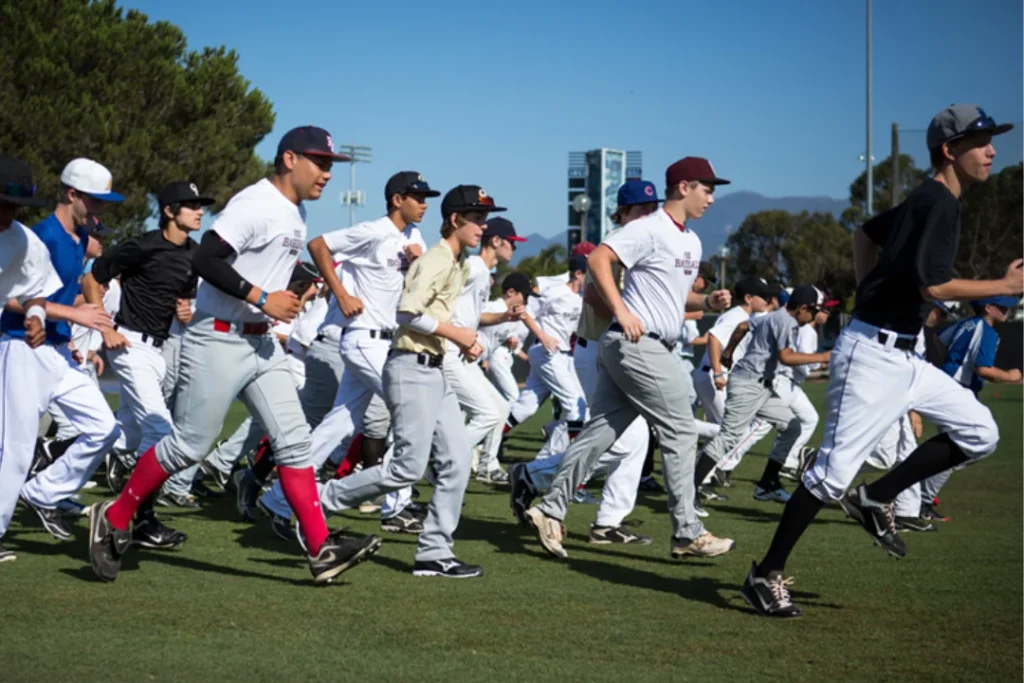
Why Clothing Brands Fail
Top Different Types of Shirts for Women and Men Top Different Types of Shirts for
Conquer Inventory Chaos, Ordering Headaches & Logistic Nightmares Build Team Spirit & Dominate the Season
Yet, beneath the roar of the crowd and the crack of the bat lies an often-overlooked but crucial aspect of team management. Uniform management, while seemingly a minor detail, can quickly snowball into a major headache. Imagine this: you’re prepping for a crucial game, and half the team’s jerseys are stained, ill-fitting, or mysteriously missing numbers. Sponsors are pulling out because your team’s on-field appearance is sloppy, and morale dips as players feel a disconnect from their team identity. This frustrating scenario, unfortunately, is a reality for many head coaches at all levels, from high school to the pros.
This comprehensive guide is designed to empower YOU, the busy head coach, to conquer the uniform challenge. We’ll delve into the often-underrated impact of uniforms, tackle common roadblocks you face, and equip you with practical strategies to streamline the ordering, manufacturing, and overall management of your team’s look. By the end of this guide, you’ll be armed with the knowledge to:
They may seem like a simple necessity, but a team’s uniforms hold surprising power. Beyond the practicality of identifying players on the field, a cohesive uniform can significantly impact player performance, team image, and overall team spirit. Let’s delve into the science and strategy behind why uniforms truly matter.

It’s not just about looking good; a well-designed uniform can actually influence a player’s mental state and potentially improve performance. Studies have shown that wearing uniforms can boost feelings of self-efficacy, a fancy term for the belief in one’s ability to succeed. Imagine stepping onto the field, not just in any clothes, but in the uniform that represents your team, your city, or even your country. There’s a sense of pride and belonging that comes with wearing those shared colors and logos. This psychological boost can translate into increased focus, determination, and a willingness to push harder during a game.
Take the legendary pinstripes of the New York Yankees. Studies have suggested that opposing teams might subconsciously perceive pinstripe-clad Yankees as more confident and intimidating, potentially impacting their own performance. Similarly, a team that feels unified and looks sharp can exude an aura of confidence that can be contagious, leading to a more aggressive and successful game.
Uniforms are a team’s silent spokesperson, constantly broadcasting a message to fans, sponsors, and competitors. A clean, well-maintained uniform creates a professional image, reflecting positively on the entire organization – the coaches, players, and the team itself. Imagine a team entering the field with mismatched socks, faded jerseys, or missing buttons. This sloppy presentation can leave a negative impression on fans, diminishing their enjoyment of the game and potentially impacting ticket sales or merchandise purchases. Sponsors, too, take note. A team that projects a polished image is a more attractive partner, potentially leading to lucrative sponsorship deals.
Perhaps the most significant impact of uniforms lies in their ability to foster team spirit. Imagine a group of young athletes, new to a team, all wearing the same uniform. Suddenly, individual differences fade, replaced by a shared identity. The uniform becomes a symbol of belonging, a visual representation of a common goal. This sense of unity is particularly crucial for younger teams, where camaraderie and a “we’re-in-this-together” mentality are essential for building a winning team. Stories abound of coaches using uniforms as a team-building tool. For example, some coaches might have players personalize their jerseys with a word or phrase that represents a team core value or a personal goal. This small act can strengthen the bond between players and further solidify the power of the uniform as a symbol of a unified force.
So, you’ve grasped the power of a unified team. Now, let’s face it, managing those uniforms can feel like a never-ending battle. Lost jerseys, mysterious sock disappearances, and the constant scramble to find the right size pants – these are just a few of the uniform woes that plague coaches everywhere. But fear not, fellow coaches! This section equips you with the tools and strategies to transform uniform management from a logistical nightmare into a streamlined operation.

The bane of every coach’s existence – the dreaded inventory headache. Lost or damaged uniforms, incorrect sizing leading to a sea of baggy pants, and the perpetual mystery of the missing batting gloves – these issues can derail your best-laid plans. Here’s how to fight back:
Ordering uniforms can feel like navigating a logistical labyrinth. Lead times can be tricky, minimum order quantities (MOQs) can leave you with extra stock, and budget constraints can force you to compromise on quality. Here’s how to emerge victorious:

The work doesn’t stop after the uniforms arrive. Ensuring timely deliveries, proper fit checks, and maintaining uniform hygiene throughout the season presents a whole new set of challenges. Here’s how to conquer them:

Now that you’ve mastered the art of uniform management, it’s time to consider where your team’s uniforms will come from. The two primary options – local and overseas manufacturers – each offer distinct advantages and considerations. Let’s delve into this global marketplace to help you find the perfect fit for your team.

There’s a certain comfort in working with a local manufacturer. Here’s why keeping it close to home can be a winning strategy:
However, local production also comes with some potential drawbacks:
Venturing beyond your borders can open doors to a world of possibilities when it comes to uniform manufacturing. Here’s why going global might be your team’s winning move:
Of course, with great opportunity comes some considerations:
Now that you’ve explored the world of uniform manufacturing, it’s time to translate vision into reality. This step-by-step guide will equip you with the knowledge and confidence to navigate the uniform ordering process seamlessly, ensuring your team takes the field looking like champions.

Before diving headfirst into quotes and fabric samples, take a moment to assess your team’s specific uniform needs. Here’s what to consider:
By taking a clear inventory of your team’s uniform requirements, you’ll be well-equipped to communicate effectively with manufacturers and ensure you receive exactly what you need.
With your needs clearly defined, it’s time to explore your manufacturing options. Here’s how to request quotes from both local and overseas manufacturers:
By providing detailed specifications, you’ll ensure manufacturers can provide accurate quotes that reflect your exact requirements.

Once you’ve chosen the manufacturer that best suits your needs and budget, it’s time to finalize the order. Here’s what to expect:

A well-fitting uniform isn’t just about aesthetics; it’s about comfort, performance, and player morale. Imagine a batter stepping up to the plate feeling restricted by a jersey that’s too tight, or a pitcher struggling to throw freely because their pants are constantly bunching up. Ill-fitting uniforms can be a major distraction, hindering player performance and impacting team spirit. This section equips you with the knowledge to ensure your team takes the field feeling confident and comfortable in uniforms that fit like a dream.

The foundation of a perfect fit lies in an accurate size chart. Here’s how to create one for your team:
The foundation of a perfect fit lies in an accurate size chart. Here’s how to create one for your team:
The world of baseball uniforms offers a surprising array of styles and customization options. Here’s a breakdown to help you navigate the possibilities:

Many manufacturers offer a wide range of customization options, allowing you to create a truly unique uniform for your team. Here are some popular choices:
A well-maintained uniform is a thing of beauty. It projects professionalism, inspires pride within the team, and ensures peak performance throughout the season. But let’s face it, baseball uniforms go through a lot. Dirt, sweat, and the occasional celebratory grass stain can quickly take a toll. This section equips you with the knowledge to keep your team’s uniforms looking sharp, game after game.

Different uniform fabrics require specific care to maintain their integrity and professional appearance. Here’s a breakdown of washing and drying techniques for common baseball uniform materials:
Even with proper care, uniforms will inevitably experience minor tears, loose buttons, or worn-out patches. Here’s how to handle these situations:
By implementing these care and cleaning strategies, you can ensure your team’s uniforms stay looking their best throughout the season. A well-maintained uniform not only projects a professional image but also fosters team pride and boosts player morale – all contributing factors to a winning team culture.
You’ve mastered the fundamentals of uniform management, but the journey doesn’t stop there. This section delves into advanced strategies to elevate your game, promote sustainability, and ensure a smooth transition during uniform redesigns.

The world is becoming increasingly eco-conscious, and baseball uniforms can be part of the solution. Here’s how to incorporate sustainable practices into your uniform management:
By embracing sustainable practices, you can demonstrate your team’s commitment to environmental responsibility and inspire others to follow suit.
For organizations with multiple teams, maintaining visual consistency across uniforms is crucial. Here’s how to achieve a unified look:
By implementing these strategies, you can ensure your organization projects a unified image, fostering a sense of connection between teams and promoting a strong overall brand identity.
Even the most beloved uniforms eventually need an update. Here’s how to handle uniform redesigns and phase-out plans for older styles:
From the roar of the crowd to the crack of the bat, baseball is a sport woven with tradition, passion, and a unified spirit. Your team’s uniforms are more than just fabric; they’re a symbol of that spirit, a visual representation of the dedication and camaraderie that fuels every player. By mastering the art of uniform management, you, the coach, can ensure your team not only looks sharp but feels confident, united, and ready to dominate the competition. This guide has equipped you with the knowledge and strategies to transform uniform management from a burden into a strategic advantage. So, take these tools, embrace the challenge, and lead your team to victory, one perfectly fitting uniform at a time.
Absolutely! Explore reputable overseas manufacturers who often offer competitive pricing without compromising quality. Look for companies with experience in baseball uniforms and a focus on customer satisfaction.
Many recycled material options offer comparable durability to traditional fabrics. Look for manufacturers who prioritize performance alongside sustainability. Proper care and maintenance practices will further extend the lifespan of your eco-friendly uniforms.
Establish a clear policy outlining player responsibility for uniform care and replacement costs associated with lost or damaged items. Consider offering a grace period for the first offense, followed by a graduated scale of consequences for repeat incidents.
There’s no one-size-fits-all answer. Factors like frequency of use, washing methods, and overall wear and tear will influence replacement timelines. Regularly inspect uniforms and replace them when they show signs of significant fading, rips, or loss of elasticity.
Many manufacturers offer customization options beyond names and numbers. Explore adding sleeve patches with player nicknames, motivational quotes on the inner collars, or a unique helmet decal design.
Invest in a size chart that caters to a wide range of body types. Schedule pre-season fittings to ensure a proper fit for every player. Consider purchasing a few additional jerseys in common sizes to account for potential growth spurts throughout the season.
Partner with a manufacturer that has a strong communication system in place. Look for companies with dedicated account managers or customer service representatives who can address your concerns promptly. Utilize clear and concise language in your communication, and consider video conferencing to bridge any language barriers.
Most reputable manufacturers have clear policies for handling damaged shipments. Inspect your uniforms thoroughly upon arrival and document any damage with photos. Contact your account manager immediately to initiate the replacement process.
Instill a sense of team pride and responsibility. Explain the importance of presenting a professional image and how proper uniform care reflects positively on the entire team. Consider offering incentives for players who consistently maintain their uniforms in pristine condition.
Expert Custom Clothing Manufcaturer

Top Different Types of Shirts for Women and Men Top Different Types of Shirts for

What You Must Know About Clothing Samples? Before You Produce a Single Garment: What You

How Much Does It Cost To Make a Hoodie A Complete Cost Breakdown for Custom

Discover the Types of Buttons Discover the Types of Buttons That Transform Style and Functionality
Most Recent Posts
Expert Custom Clothing Manufcaturer
Join our Mailing list!
Get all latest news, exclusive deals and updates.